Wood Pellet Fuel Market Research, 2032
The global wood pellet fuel market size was valued at $12.3 billion in 2022, and is projected to reach $25.5 billion by 2032, growing at a CAGR of 7.6% from 2023 to 2032.
Report Key Highlighters:
- The wood pellet fuel market study covers 20 countries. The research includes a segment analysis of each country in terms of both value ($million) and volume (kilotons) for the projected period 2023-2032.
- The study integrated high-quality data, professional opinions and analysis, and critical independent perspectives. The research approach is intended to provide a balanced view of global markets and to assist stakeholders in making educated decisions in order to achieve their most ambitious growth objectives.
- Over 3,700 product literatures, annual reports, industry statements, and other comparable materials from major industry participants were reviewed to gain a better understanding of the market.
- The wood pellet fuel market is highly fragmented, with several players including Drax Group PLC, Energex American Inc., Enviva, LP, F.E. Wood & Sons, Fram Renewable Fuels LLC, Granules LG Inc., Lignetics Group, Rentech Inc, Snow Timber Pellets, LLC, Wood Pellet Energy Ltd. Also tracked key strategies such as acquisitions, product launches, mergers, expansion etc. of the players operating in the wood pellet fuel market.
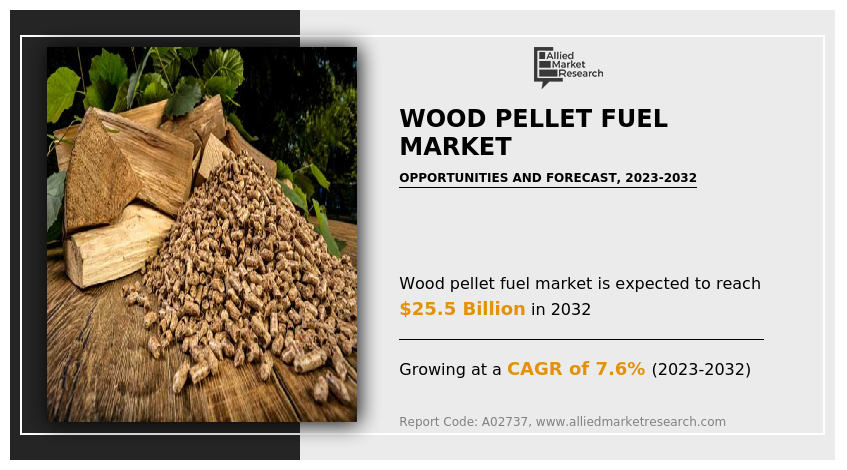
Wood pellet gas is a type of biomass gas made from compressed wood or biomass residues, such as sawdust, wood chips, and agricultural waste. It is produced by way of compacting these substances below high strain barring the use of adhesives or chemicals. The resulting pellets are small cylindrical shapes with a diameter of around 6-8 mm and a size of 10-30 mm. Wood pellet gasoline is a sustainable and renewable energy source, as it is derived from herbal materials that can be replenished over time. Its popularity has grown appreciably in current years due to its possible as a cleaner and extra environmentally pleasant alternative to fossil fuels, in particular in a number of domains such as residential heating, energy generation, and industrial applications.
In the residential heating sector, wooden pellet fuel is principally used in pellet stoves and pellet boilers. These appliances are designed to burn wood pellets efficiently, presenting heat for person residences and small-scale industrial buildings. Wood pellet stoves are favored via house owners for their ease of use, automated ignition, and temperature manage features. They can be used as a major heating supply or as a supplemental warmth provider, depending on the dimension of the area they want to heat. Pellet boilers, on the different hand, are extra suitable for large buildings and can grant each area heating and home warm water. The use of wood pellet gas in residential heating can extensively reduce greenhouse gas emissions and reliance on fossil fuels, contributing to a more sustainable strength landscape.
The utilization of wood pellet fuel is no longer constrained to residential heating; it also plays a fundamental function in the electricity generation sector. Large-scale strength plants have adopted biomass co-firing and devoted biomass electricity vegetation to generate electricity from wooden pellets. Co-firing includes blending timber pellets with coal in current coal-fired electricity plants, thereby reducing the normal carbon emissions from the plant and providing a extra sustainable power mix. Biomass strength plant life are made expressly to use wooden pellets or different biomass substances as their major gas source. Similar to conventional coal or gas-fired energy plants, these amenities use steam mills to generate energy. To reap carbon emission reduction dreams and diversify electricity sources, wooden pellet gasoline can be used in power generation.
Industrial purposes also advantage from the use of wooden pellet fuel. For instance, wooden pellets are employed in some industrial boilers for steam generation, supplying heat for quite a number processes in industries such as meals processing, textile, and chemical production. In addition to their use as a heating source, wood pellets are used in some industrial processes to serve as a feedstock for bioenergy production, such as biogas and bioethanol. The versatility of wood pellet gas in industrial functions allows corporations to reduce their carbon footprint while preserving efficient and dependable operations.
Rise in demand for wood pellets as a renewable energy source is anticipated to propel growth in the wood pellet market.
Wood pellets are a renewable energy supply made from sustainably managed forests, with a lower carbon footprint compared to fossil fuels when burned. Many governments guide their use through incentives such as subsidies, tax credits, renewable portfolio standards, and feed-in tariffs. The want to limit fossil fuel dependence and beautify electricity safety has pushed nations to invest in timber pellets. Advancements in science have accelerated production and combustion efficiency, making timber pellet gasoline extra attractive for residential and industrial users. Wood pellets are used in power plant life alongside fossil fuels via biomass co-firing to minimize greenhouse fuel emissions and meet renewable energy targets. This promotes sustainable forest management practices, ensuring a continuous provide of wooden for pellet manufacturing while retaining the ecosystem.
Technological advancements in wood pellet fuel production drive wood pellet fuel market growth.
Technological developments and research are using the boom of the timber pellet and renewable energy market. Improved palletization technological know-how enhances the compression of timber biomass into pellets, elevating density, durability, and electricity efficiency. Automation and optimization in production decorate efficiency, decrease waste, and cut costs. Automated structures exactly manipulate moisture, pellet size, and quality. Technology streamlines wood pellet manufacturing, boosting productivity and decreasing waste. It aids standardization, simplifying satisfactory compliance for manufacturers and product resolution for consumers. Certification processes make sure sustainability standards are met, constructing trust. Logistics improvements optimize the furnish chain, curbing costs and emissions in wood pellet transportation from production to quit users.
However, Seasonal demand for wood pellet is anticipated to hinder the growth of the wood pellet fuel market. Seasonal variants substantially have an impact on timber pellet production, availability, and pricing. Wood fiber is the important raw material, received from a number of sources such as sawmill residues and wooded area byproducts. The furnish of these resources is impacted by factors like logging activity, climate patterns, and client demand for different timber products. The furnish of raw materials may decline in the course of the iciness months due to a discount in logging activities.
To meet the demands, tremendous quantities of pellets are produced when there is an abundance and little need, and pellets are stockpiled for the colder months when demand is higher. Controlling stock and storage space is critical for maintaining costs and provide in the course of periods of excessive demand. Manufacturers construct vital reserves and differ their sources of raw substances to reduce the have an impact on of seasonal fluctuations. Overall, for a reliable and less costly supply of wooden pellets as a renewable energy source, it is essential to know and control seasonal changes.
The wood pellet fuel market share is segmented into feedstock, application, end-use industry, and region. On the basis of feedstock, the market is categorized into forest waste, agricultural waste, and others. On the basis of application, the market is divided into heating, power generation, combined heat and power, and others. On the basis of end-use industry, the market is fragmented into residential, commercial, and industrial. On the basis of region, the market is studied across North America, Europe, Asia-Pacific, and LAMEA.
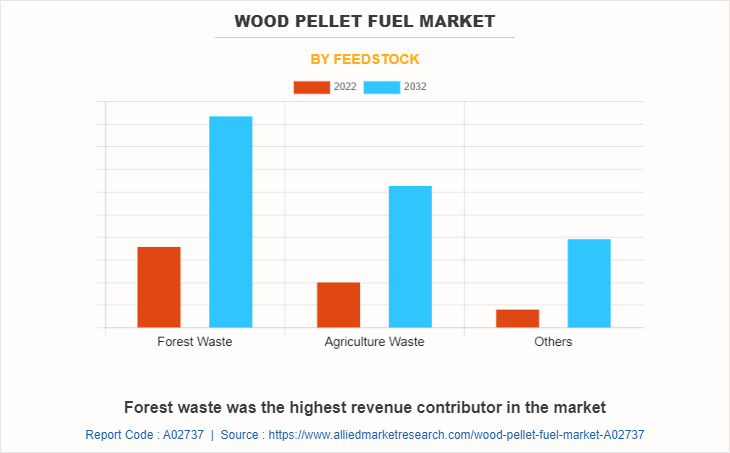
Wood pellet fuel provides a way to make use of woodland waste and byproducts that might in any other case go to waste or contribute to environmental issues such as woodland fires or decay. This waste includes timber chips, sawdust, bark, and other residues generated from trees harvesting, logging operations, and woodland management activities. Converting wooded area waste into timber pellets helps reduce the environmental affect of waste disposal. When left to decay, forest waste can release greenhouse gases like methane. By turning this waste into pellets and burning them, the emissions are normally regarded carbon-neutral due to the carbon dioxide launched all through combustion is roughly equivalent to the carbon dioxide absorbed by the trees all through their growth.
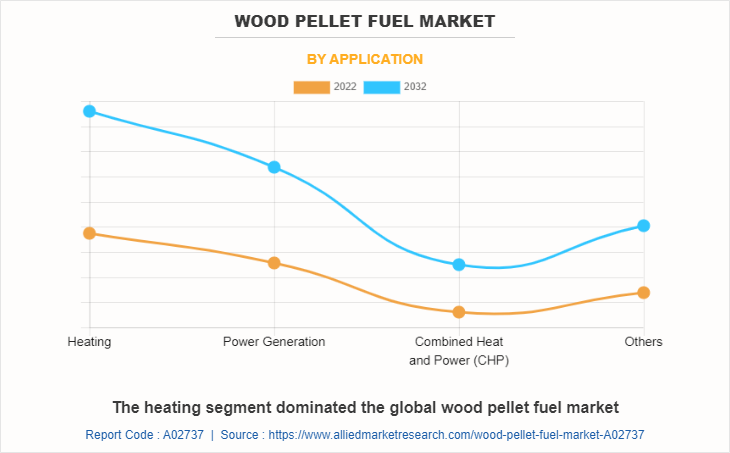
Wood pellet stoves and boilers are popular options for residential heating, in particular in areas the place wooden resources are abundant. Pellet stoves are designed to burn pellets efficiently and cleanly, imparting a handy and renewable warmth source for man or woman homes. Pellet boilers can be built-in into current heating systems to supply central heating and hot water. Industries that require a big quantity of heat, such as manufacturing and food processing, can additionally advantage from wooden pellet heating systems. These structures can be personalized to meet the specific warmth needs of exclusive industrial processes.
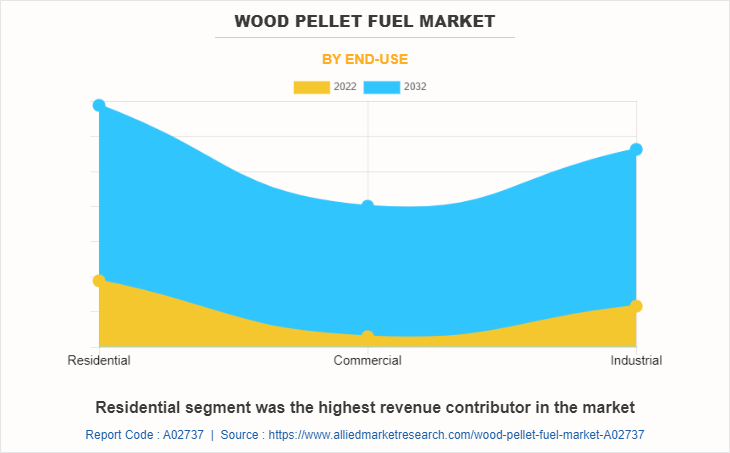
Wood pellet fuel is particularly used for residential heating purposes. It's frequently used in pellet stoves or boilers, which are designed to burn pellets effectively and cleanly. These heating appliances can be used to warmth man or woman rooms or complete homes. Wood pellets are accessible in standardized sizes and can be easily stored in baggage or bulk. This makes them convenient for homeowners, especially when compared to the storage and handling of firewood.
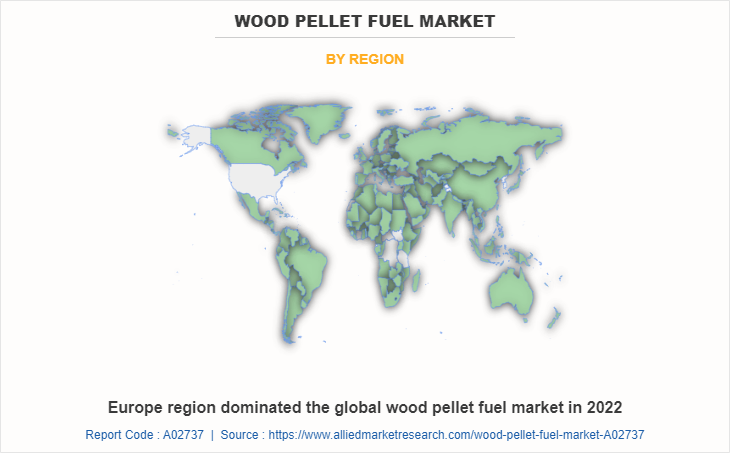
In Europe, a streamlined approach to pellet sizing has been embraced to enhance consistency and compatibility throughout the supply chain. This has led to the substantial adoption of a standardized pellet size recognized as the Euro pellet, measuring 800mm x 1200mm. This measurement has won authentic cognizance from important bodies like the European Pellet Association (EPAL) and the International Organization for Standardization (ISO). By becoming the prevailing norm, the Euro pellet has notably simplified logistics and optimized operational processes in the course of the continent.
The major players operating in the wood pellet fuel market include Drax Group PLC, Energex American Inc., Enviva, LP, F.E. Wood & Sons, Fram Renewable Fuels LLC, Granules LG Inc., Lignetics Group, Rentech Inc, Snow Timber Pellets, LLC, Wood Pellet Energy Ltd.
Apart from the above-listed companies, there are many more companies that manufacture wood pellet fuel which include (Bison, IFCO Systems, Vermont Wood Pellet Company, AVPGroup, Farm Fuels, Pinnacle, Drax Biomass, Graanul Invest, Germen Pellets, AN Viet Phat Energy Co., Ltd, Trae Fuels, Curran Renewable Energy, Easy Heat Wood Pellets, Maine Woods Pellet Company, Energy Wood Pellets, Somerset Pellet Fuel and others)
Historical Trends of Wood Pellet Fuel:
- The concept of using wooden pellets as a renewable energy supply emerged all through the oil disaster of the 1970s. As nations sought alternative strength options, wood pellets received attention due to their conceivable for sustainable and renewable fuel.
- In the 1980s, Sweden was once one of the pioneers in the usage of wood pellets for heating purposes. They developed pellet stoves and boilers, promotion the use of wooden pellets as a cleaner and greater sustainable choice to fossil fuels.
- In the 1990s, wooden pellet production and consumption began to grow, mainly in European countries such as Austria, Germany, and Denmark. These countries have been among the first to adopt policies and incentives to promote the use of wood pellets for heating and electrical energy generation.
- In the 2000s, the demand for wood pellets continued to rise, driven by way of growing environmental concerns, the want for renewable energy sources, and efforts to decrease greenhouse fuel emissions. The U.S. additionally noticed a massive amplify in wooden pellet production during this period.
- In 2009, The European Union officially recognized wood pellets as a sustainable shape of renewable strength in its Renewable Energy Directive. This designation further boosted the manufacturing and consumption of timber pellets in European countries.
- In 2010, the wood pellet industry continued to expand globally, with many countries investing in biomass energy flowers and making use of wooden pellets for residential heating and industrial processes. Wood pellets became an imperative element of the renewable energy mix.
- In 2015, the UK noticed a surge in demand for wooden pellets due to its selection to segment out coal energy plants. Many of these flowers were transformed to biomass electricity plant life the usage of timber pellets as a most important fuel source.
- In 2020, The wooden pellet enterprise faced elevated scrutiny concerning its sustainability and environmental impact. Questions arose about the genuine carbon neutrality of wood pellets, as concerns had been raised about deforestation and carbon emissions related with manufacturing and transportation.
Key Benefits For Stakeholders
- This report provides a quantitative analysis of the market segments, current trends, estimations, and dynamics of the wood pellet fuel market analysis from 2022 to 2032 to identify the prevailing wood pellet fuel market opportunities.
- The market research is offered along with information related to key drivers, restraints, and opportunities.
- Porter's five forces analysis highlights the potency of buyers and suppliers to enable stakeholders make profit-oriented business decisions and strengthen their supplier-buyer network.
- In-depth analysis of the wood pellet fuel market forecast assists to determine the prevailing market opportunities.
- Major countries in each region are mapped according to their revenue contribution to the global market.
- Market player positioning facilitates benchmarking and provides a clear understanding of the present position of the market players.
- The report includes the analysis of the regional as well as global wood pellet fuel market trends, key players, market segments, application areas, and market growth strategies.
Wood Pellet Fuel Market Report Highlights
| Aspects | Details |
| Market Size By 2032 | USD 25.5 billion |
| Growth Rate | CAGR of 7.6% |
| Forecast period | 2022 - 2032 |
| Report Pages | 341 |
| By Feedstock |
|
| By Application |
|
| By End-Use |
|
| By Region |
|
| Key Market Players | Granules LG Inc., Fram Renewable Fuels LLC, Enviva LLP, Energex American Inc., Snow Timber Pellets, LLC, Drax Group PLC, F.E. Wood and Sons, Rentech Inc., Lignetics Group, Wood Pellet Energy Ltd. |
| Other Key Market Players | Biopower Sustainable Energy Corp., Asia Biomass Public Company Limited |
Analyst Review
According to the opinions of various CXOs of leading companies, the wood pellet fuel market is driven by a rise in demand for heating applications. Pellet boilers, stoves, and even some classic wood-burning stoves that have been adapted to burn pellets all frequently use wood pellets fuel. Pellet stoves and boilers are made to mechanically feed pellets into the combustion chamber, enabling reliable and effective heating.
The surge in biomass power plants drives the growth of the wood pellet fuel market during the forecast period. Wood pellets are in high demand as a renewable energy source due to the significant construction and expansion of biomass power plants. These power plants generate electricity and heat by burning organic materials such as wood pellets and agricultural residues. Wood pellets have a high energy density, making them efficient for power generation. Biomass power plants using wood pellets emit fewer greenhouse gases and pollutants than fossil fuel power plants, aiding in meeting emissions reduction targets and environmental regulations.
Seasonal demand for wood pellets is expected to hinder the growth of the wood pellet fuel market during the forecast period. Wood pellet production, availability, and pricing are influenced by seasonal changes. These pellets are manufactured using wood fiber derived from various sources such as sawmill residues and forest byproducts. The availability of these materials depends on factors such as logging activities, weather conditions, and the demand for other wood products. During the winter months, harsh weather limits logging activities, resulting in reduced raw material availability. To address the increased demand for wood pellets during colder months when heating needs escalate, surplus pellets are produced during times of abundance and strategically stored. Effective inventory management and sufficient storage capacity are essential for stabilizing prices and ensuring a consistent supply during peak demand periods.
The Europe region is projected to register robust growth during the forecast period. Robust demand from diverse industries including manufacturing, retail, food and beverages, and pharmaceuticals makes the UK a significant wood pellet consumer. The effectiveness and dependability of pellet systems are crucial for enabling smooth goods movement across the supply chain in these sectors.
Increase in demand for wood pellet for renewable energy sources and surge in biomass power plants are the driving factors of wood pellet fuel market.
Advancements in technology with respect to wood pellet are the upcoming trends of the wood pellet fuel market in the world.
The leading application of wood pellet fuel market includes heating, power generation, combined heat and power, and others.
The wood pellet fuel market is segmented into feedstock, application, end-use industry, and region are the segmentation of wood pellet fuel market.
Forest waste segment dominated by feedstock in the wood pellet fuel market.
Europe is the largest region for wood pellet fuel market globally.
The top companies to hold the market share in wood pellet fuel market includes Drax Group PLC, Energex American Inc., Enviva, LP, F.E. Wood & Sons, Fram Renewable Fuels LLC, Granules LG Inc., Lignetics Group, Rentech Inc, Snow Timber Pellets, LLC, Wood Pellet Energy Ltd.
Loading Table Of Content...
Loading Research Methodology...


